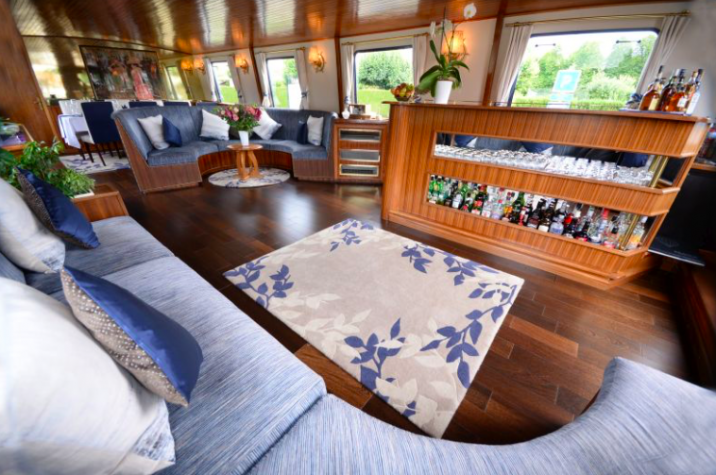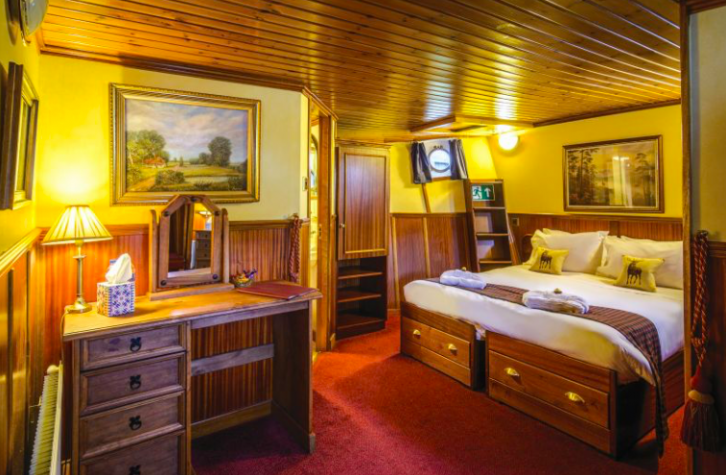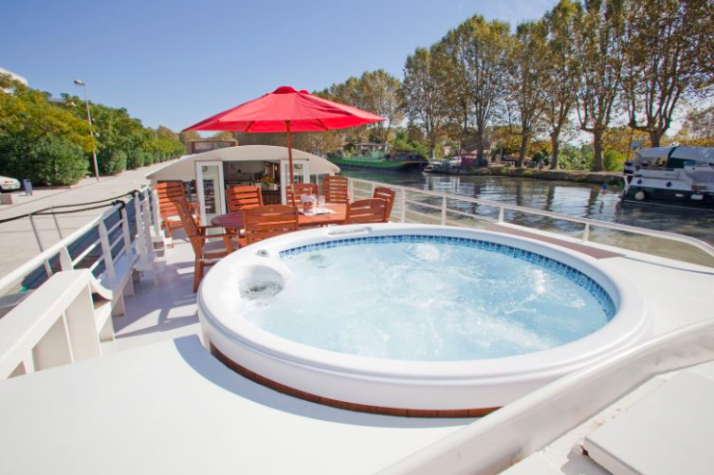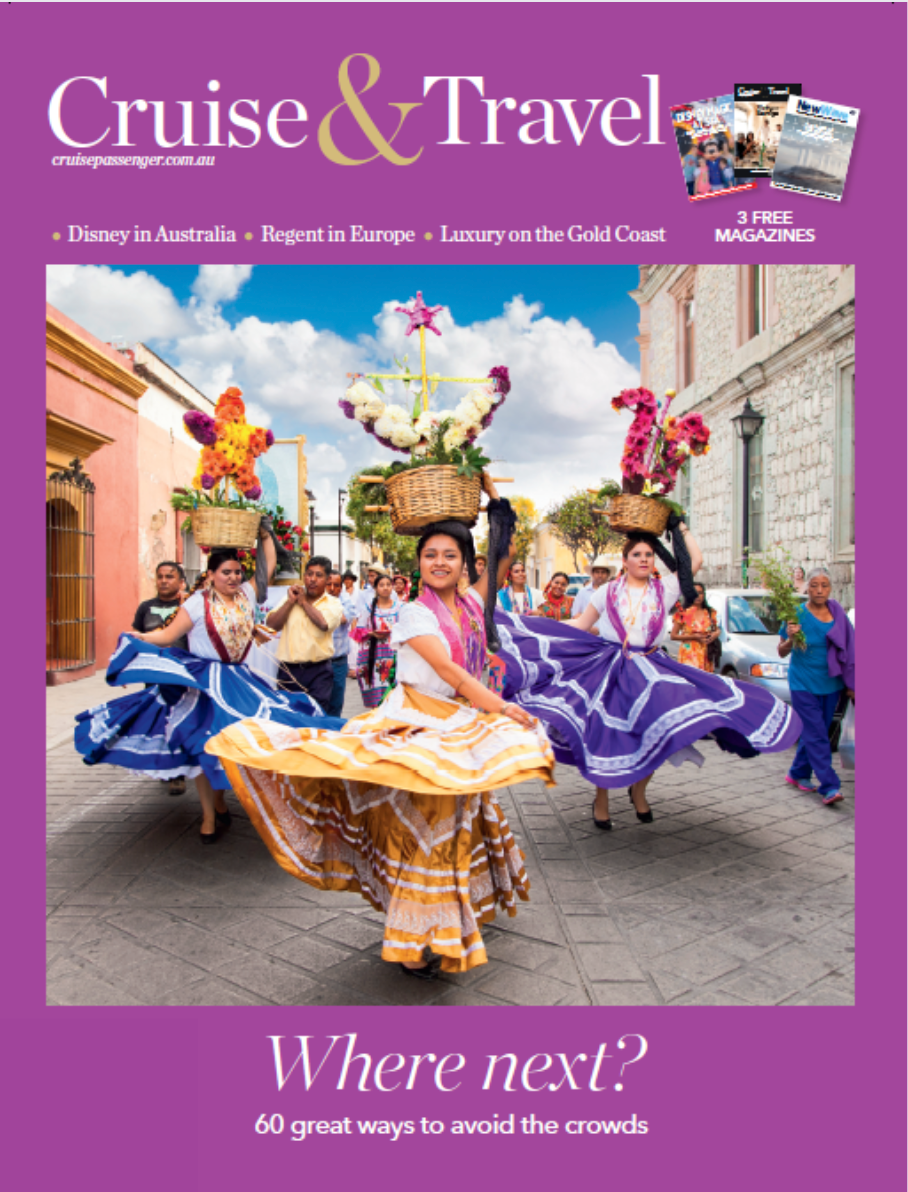Why Aussies are in love with barging
Barge cruising is fast becoming a popular luxury option for river cruisers looking for holidays beyond the Rhine, Rhone and Danube. It offers a slower, more immersive, yet still bespoke experience that is growing quickly with Aussie travellers.
Barge travel was once only popular among Europeans but strong interest is now being expressed in new markets, including passengers from Australia and America. But, Derek Banks, managing director of European Waterways, says about 20 per cent of clients are now Australian, up from just 2 per cent two decades years ago.
European Waterways dominates the market with 17 vessels while Belmond has seven and CroisiEurope five.
France is essentially the home of barge cruising with the 300-year-old Canal du Midi still the most popular place by far for first-time barge cruisers. But there are other less-travelled destinations, such as Scotland, Ireland, Holland and Italy.
Mr Banks says there are a number of reasons why you should consider hotel barging for your next holiday on Europe’s waterways. It’s particularly suitable for small groups seeking a relaxed, luxurious holiday experience and it’s why there has been a great growth in this style of cruising in recent years for Australians.

“Australians are good travellers and I think our style of cruising really connects with them. Probably 20 per cent of our clients are Australian,” Mr Banks says.
So, what are the advantages of barge cruising compared with traditional river cruising?
- The gastronomic adventure and fine wine experiences, simply moving a 200-ton hotel barge around tight corners, under old stone bridges and through locks with barely room for a credit card each side, is worth the trip on its own.
- Barge hotels move really slowly, a brisk walk overtakes the barge in minutes.
- Everything you see is close up, not hundreds of metres away.
- While there are daily excursions to chateaux, vineyards, markets and quirky little out of the way places, the real fun is the barge moving, always during the day, always slow and the captains are experienced barge masters who take great satisfaction in making the whole barge cruising side look easy.
- The barges are all smaller than river cruise ships. Tonnage wise they are 150-ton versus 1500-tonne on traditional river vessels, and are 39 metres compared to 135 metres in length, and carry 10 passengers as opposed to 190.

The latest trends for barge cruising is experiential excursions
Mr Banks says the advantages of small barge hotels is that they allow for closer experiences with locations and cultures.
“Because of our low passenger capacities on each hotel barge (6-20 passengers) and long-standing local relationships, we are able to arrange fascinating boutique visits such as lunch with a baroness in her vaulted chateau kitchen (La Belle Epoque, Burgundy),” he says.
“Our falconry demonstrations in Scotland, Ireland and Burgundy bring smiles to the most seasoned traveller’s face. In France, we might start with a bakery visit for those passengers that want to join a crew member collecting pastries for breakfast. The aroma of croissants cooking is a compulsory exercise in my opinion.
“Breakfast is usually followed by a cruise in the morning and folk either relax on deck or just walk alongside the barge on the ever present towpath or bike off into a village. Barging is very casual.”

Here’s what a day on board a barge looks like
“We have been barging for (over 40) years and bring the best of the regions we cruise through, to our clients, because of this experience,” Mr Banks says.
“After lunch, we may go on an excursion in one of our eight-seater luxury vans, driven by our tour guide crew member. If there is a major attraction close by, such as medieval Carcassonne on the Canal du Midi, which is well known, we would visit early before the crowds, as it is a ‘must do’, but also perhaps take in an exclusive wine tasting in a smaller chateau. Lunch is lighter than dinner but still an event!
“All cheeses and wines and every course we serve is explained by the chef or housekeeper, often with anecdotal comments. Our cruises are a gastronomic adventure, accompanied by fine regional wines from vineyards we have known for years to complement the meals. This gradual immersion into a region’s history and local culture is the cornerstone of barging. Dinner may be preceded by a jazz band or local musician on one evening, after dinner conversation is guaranteed as independent travellers already have something in common they have never experienced before.”

Main differences between barging and traditional river cruising
- Moving 10 people compared to 200 is the main difference. A smaller group is much easier to please.
- Fifty per cent of bookings are “whole boat charter” where a family or group of friends enjoy a week together.
- Most cruises start on Sunday and finish on Saturday. So seven days only.
- Barges never cruise at night.
- Barges do not double moor.
- Barges are less affected by floods and drought as the canals are managed waterways, with feeder lakes and streams, weirs and overflows.
There are still plenty of luxury elements on board
If the initial idea of a barge cruise doesn’t immediately provoke thoughts of luxury, Mr Banks points out there are several surprisingly deluxe elements of barging:
- A ratio of one crew member to every two passengers, first-name terms from day one, moving small groups around in eight-seater Mercedes vans to arrive for a meeting with a count or baroness.
- Accommodation is well appointed, every barge spends fours months of the year being fettled for the next season.
- Everything is done for you by the crew, with every small request looked after. Clients always build up a special relationship with the crew and it is not unusual for repeat clients to request the same crew when they return on a different vessel, which is sometimes possible.
- There is a special feeling that comes with moving about on such a relatively large vessel along much smaller canals and rivers.
- Many of the barges are historic vessels with guests discovering their story once onboard.
All of this adds to a special feeling of “luxury” and also helps moderate the general connotation that a barge is an old coal scuttle!

The cost
Mr Banks admits barging is more expensive than your average river cruise.
“Generally I would say we are more expensive and rightly so! You get what you pay for,” he says.
With multiple itineraries across 16 destinations, sailing for a total of six nights, prices vary from:
- As low as $6,607 per person, per cruise, based on double occupancy in a stateroom during the low season, which is roughly $1,100 per person per night.
- Or as much as $100,000 on a whole barge charter basis, for a maximum of 12 passengers, during the high season. That’s roughly $8,330 per person for the six nights, which is $1,388 per person, per night.
Where can you go and what can you do?
According to Mr Banks, barging can be for any level of activity
“A barge cruise can be as active or inactive as you want, for sure you eat well, but there is ample opportunity to work off the added calories along the tow path or biking,” he says. “Most of our Australian clients are well-heeled, independent, seasoned travellers, couples who have made many previous European trips. We also get a lot of families and college reunion groups.”
Mr Banks agrees that, as barge cruises are proving to be such a success right now, it looks likely there will be continued growth in future.
“We have two new projects very much in the pipeline, which I am excited about,” he reveals. “But barging will probably remain a niche industry, purely because of the number of passengers carried. A decent-sized cruise ship carries more in a couple of weeks than we carry in a season.”
And Cruise Passenger intends to reveal the latest barging projects as soon as they are announced.
What’s included
- Comfortable accommodation in air-conditioned, en-suite staterooms or suites.
- Gourmet meals prepared by the on-board chef, fine wines and an open bar.
- Daily escorted excursions in an air-conditioned minibus to places of interest and private wine tastings.
- Local transfers e.g. to and from Paris.
- Bicycles and, on most hotel barges, an on-deck spa pool.
- Attentive service from an experienced crew – captain, chef, tour guide and hosts/hostesses.
For more information, visit www.europeanwaterways.com

